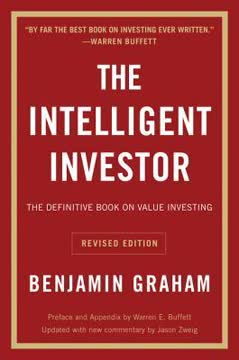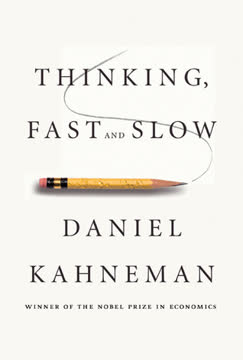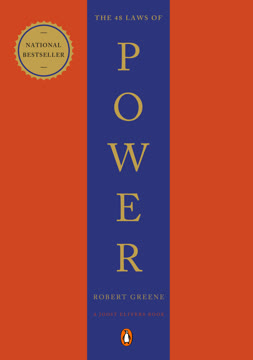मुख्य निष्कर्ष
1. सक्रिय सुनवाई: प्रभावी वार्ता की नींव
सबसे प्रभावी वार्ताकार उन मौखिक, पारावाक्य (कैसे कहा गया) और गैर-मौखिक संचार के प्रति जागरूक होते हैं जो वार्ताओं और समूह गतिशीलता में व्याप्त होते हैं।
प्रभावी सुनवाई अत्यंत महत्वपूर्ण है। इसमें केवल शब्दों को सुनना नहीं, बल्कि स्वर, शारीरिक भाषा और अंतर्निहित भावनाओं को समझना भी शामिल है। सुनने के इस व्यापक दृष्टिकोण से वार्ताकार महत्वपूर्ण जानकारी एकत्र कर सकते हैं और अपने समकक्षों के साथ संबंध बना सकते हैं।
- सक्रिय सुनवाई के प्रमुख घटक:
- मिररिंग: दूसरे व्यक्ति द्वारा कहे गए अंतिम कुछ शब्दों को दोहराना
- मौन: रुकावटें डालकर दूसरे व्यक्ति को विस्तार से बताने के लिए प्रोत्साहित करना
- न्यूनतम प्रोत्साहक: "हां" और "मैं समझता हूँ" जैसे छोटे मौखिक संकेतों का उपयोग करना
इन तकनीकों में महारत हासिल करके, वार्ताकार एक ऐसा वातावरण बना सकते हैं जहाँ उनके समकक्ष को सुना और समझा हुआ महसूस होता है, जिससे अधिक उत्पादक वार्ताएँ और बेहतर परिणाम प्राप्त होते हैं।
2. "नहीं" को समझना: लाभ और जानकारी प्राप्त करने का साधन
"नहीं" वार्ता की शुरुआत है, इसका अंत नहीं।
"नहीं" एक शक्तिशाली उपकरण है। लोकप्रिय धारणा के विपरीत, वार्ता में "नहीं" सुनना लाभकारी हो सकता है। यह लोगों को सुरक्षित और नियंत्रण में महसूस कराता है, जिससे अधिक ईमानदार संवाद और सहयोग का मार्ग प्रशस्त होता है।
- "नहीं" को अपनाने के लाभ:
- आपके समकक्ष के लिए सुरक्षा की भावना पैदा करता है
- उन्हें अपने दृष्टिकोण को स्पष्ट रूप से परिभाषित करने के लिए प्रोत्साहित करता है
- अधिक जानकारी एकत्र करने का अवसर प्रदान करता है
"नहीं" का प्रभावी ढंग से उपयोग और सुनने की कला सीखकर, वार्ताकार बातचीत को अधिक उत्पादक परिणामों की ओर मोड़ सकते हैं और अपने समकक्षों के साथ मजबूत संबंध बना सकते हैं।
3. कैलिब्रेटेड प्रश्न: महत्वपूर्ण जानकारी उजागर करने की कुंजी
कैलिब्रेटेड प्रश्न आपके समकक्ष को समस्या के बारे में शिक्षित करने की शक्ति रखते हैं, बजाय इसके कि उन्हें बताएं कि समस्या क्या है।
खुले प्रश्न शक्तिशाली होते हैं। कैलिब्रेटेड प्रश्न, विशेष रूप से जो "कैसे" या "क्या" से शुरू होते हैं, आपके समकक्ष को आपकी समस्याओं को हल करने के लिए प्रोत्साहित करते हैं। ये दूसरे पक्ष को नियंत्रण का आभास देते हैं जबकि वास्तव में उन्हें आपके इच्छित परिणाम की ओर मार्गदर्शन करते हैं।
- प्रभावी कैलिब्रेटेड प्रश्नों के उदाहरण:
- "मुझे यह कैसे करना चाहिए?"
- "यहाँ उद्देश्य क्या है?"
- "यह आपके बाकी टीम को कैसे प्रभावित करता है?"
ये प्रश्न न केवल जानकारी एकत्र करते हैं बल्कि आपके समकक्ष को समस्या समाधान में संलग्न करते हैं, जिससे वे एक पारस्परिक रूप से लाभकारी समाधान खोजने में अधिक रुचि रखते हैं।
4. वार्ताओं में भावनाओं को लेबल करने की शक्ति
लेबलिंग किसी की भावना को मान्यता देने का एक तरीका है।
भावनात्मक पहचान अत्यंत महत्वपूर्ण है। लेबलिंग में आपके समकक्ष द्वारा अनुभव की जा रही भावनाओं को मौखिक रूप से मान्यता देना शामिल है। यह तकनीक सहानुभूति प्रदर्शित करती है और नकारात्मक भावनाओं को कम करने में मदद करती है, जिससे आपका समकक्ष आपके विचारों के प्रति अधिक ग्रहणशील हो जाता है।
- प्रभावी लेबलिंग के चरण:
- भावना की पहचान करें
- इसे "ऐसा लगता है कि..." या "ऐसा लगता है कि..." जैसे वाक्यांशों से लेबल करें
- चुप रहें और दूसरे व्यक्ति को प्रतिक्रिया देने का अवसर दें
भावनाओं को सही ढंग से लेबल करके, वार्ताकार विश्वास और संबंध बना सकते हैं, जिससे अधिक खुले और उत्पादक चर्चाएँ होती हैं।
5. सामरिक सहानुभूति: अपने समकक्ष को समझना और प्रभावित करना
सामरिक सहानुभूति किसी अन्य के भावनाओं और मानसिकता को उस क्षण में समझना है और यह भी सुनना है कि उन भावनाओं के पीछे क्या है ताकि आप सभी आगे के क्षणों में अपने प्रभाव को बढ़ा सकें।
सहानुभूति एक रणनीतिक उपकरण है। सामरिक सहानुभूति केवल आपके समकक्ष की भावनाओं को समझने से परे जाती है; यह उस समझ का उपयोग करके वार्ता को अपने पक्ष में मार्गदर्शित करने में शामिल है। यह प्रदर्शित करके कि आप उनके दृष्टिकोण को समझते और सम्मान करते हैं, आप उनके निर्णयों को अधिक प्रभावी ढंग से प्रभावित कर सकते हैं।
- सामरिक सहानुभूति के प्रमुख पहलू:
- अंतर्निहित प्रेरणाओं को समझने के लिए सक्रिय सुनवाई
- भावनाओं को स्वीकार करना बिना आवश्यक रूप से सहमत हुए
- समझ का उपयोग करके बातचीत को पारस्परिक लक्ष्यों की ओर मार्गदर्शित करना
सामरिक सहानुभूति में महारत हासिल करके, वार्ताकार एक सहयोगात्मक वातावरण बना सकते हैं और ऐसे समाधान खोज सकते हैं जो दोनों पक्षों की आवश्यकताओं को संतुष्ट करते हैं।
6. वास्तविकता को मोड़ना: वार्ताओं में एंकरिंग और फ्रेमिंग
किसी भी चीज़ का असली मूल्य इस बात पर निर्भर करता है कि आप इसे किस दृष्टिकोण से देख रहे हैं।
धारणा वास्तविकता को आकार देती है। कुशल वार्ताकार समझते हैं कि जानकारी को प्रस्तुत करने का तरीका इसे कैसे देखा जाता है, इस पर महत्वपूर्ण प्रभाव डाल सकता है। प्रस्तावों को सावधानीपूर्वक फ्रेम करके और रणनीतिक एंकरिंग का उपयोग करके, वार्ताकार अपने समकक्ष की मूल्य और निष्पक्षता की धारणा को प्रभावित कर सकते हैं।
- वास्तविकता को मोड़ने की तकनीकें:
- एंकरिंग: एक चरम प्रारंभिक प्रस्ताव सेट करना ताकि बाद की वार्ताओं को प्रभावित किया जा सके
- फ्रेमिंग: जानकारी को इस तरह प्रस्तुत करना कि कुछ पहलुओं को दूसरों पर अधिक उजागर किया जाए
- हानि की प्रवृत्ति: यह बताना कि दूसरे पक्ष को सौदा न करने पर क्या खोना पड़ सकता है
इन तकनीकों में महारत हासिल करके, वार्ताकार वार्ता के परिदृश्य को अपने लाभ के लिए आकार दे सकते हैं, जिससे उनका इच्छित परिणाम अधिक आकर्षक और उचित प्रतीत होता है।
7. मोलभाव की तकनीकें: एकरमैन मॉडल और आत्मविश्वास
इस प्रणाली की प्रतिभा यह है कि यह उन मनोवैज्ञानिक रणनीतियों को शामिल करती है जिन पर हमने चर्चा की है—आपसीता, चरम एंकर, हानि की प्रवृत्ति, आदि—बिना आपको उनके बारे में सोचने की आवश्यकता के।
संरचित मोलभाव प्रभावी है। एकरमैन मॉडल मोलभाव के लिए एक प्रणालीबद्ध दृष्टिकोण प्रदान करता है जो विभिन्न मनोवैज्ञानिक सिद्धांतों को शामिल करता है। यह मॉडल, आत्मविश्वासपूर्ण तकनीकों के साथ मिलकर, वार्ताकारों को मोलभाव की प्रक्रिया को आत्मविश्वास के साथ नेविगेट करने की अनुमति देता है।
एकरमैन मॉडल के चरण:
- अपना लक्ष्य मूल्य निर्धारित करें (आपका लक्ष्य)
- अपना पहला प्रस्ताव अपने लक्ष्य मूल्य का 65% पर सेट करें
- घटते क्रम में तीन वृद्धि की गणना करें (85%, 95%, और 100% तक)
- प्रस्तावों के बीच सहानुभूति और "नहीं" कहने के विभिन्न तरीकों का उपयोग करें
- सटीक, गोल संख्या का उपयोग करें
- अपने अंतिम संख्या पर, एक गैर-आर्थिक वस्तु जोड़ें
इस मॉडल का पालन करके और आत्मविश्वास बनाए रखते हुए, वार्ताकार अपने लिए अनुकूल समझौता प्राप्त करने की संभावनाओं को अधिकतम कर सकते हैं।
8. वार्ताओं में ब्लैक स्वांस की पहचान और लाभ उठाना
ब्लैक स्वांस लाभ गुणक होते हैं।
अज्ञात जानकारी खेल को बदल सकती है। ब्लैक स्वांस वे जानकारी के टुकड़े होते हैं जो, जब उजागर होते हैं, तो वार्ता के पाठ्यक्रम को नाटकीय रूप से बदल सकते हैं। ये अज्ञात अज्ञात महत्वपूर्ण लाभ प्रदान कर सकते हैं जब इन्हें पहचाना और प्रभावी ढंग से उपयोग किया जाए।
- ब्लैक स्वांस को उजागर करने की रणनीतियाँ:
- अपने समकक्ष के साथ आमने-सामने समय बिताएं
- अनगिनत क्षणों पर ध्यान दें
- ऐसी जानकारी की तलाश करें जो समझ में नहीं आती - यह अक्सर एक छिपे हुए कारक का संकेत देती है
ब्लैक स्वांस की सक्रिय खोज करके और उन्हें लाभ में बदलने की समझ विकसित करके, वार्ताकार महत्वपूर्ण लाभ प्राप्त कर सकते हैं और ऐसे परिणाम हासिल कर सकते हैं जो वार्ता की शुरुआत में असंभव लगते थे।
अंतिम अपडेट:
FAQ
What's Never Split the Difference about?
- Negotiation Techniques: The book focuses on advanced negotiation strategies derived from Chris Voss's experience as an FBI hostage negotiator, emphasizing psychological aspects over traditional methods.
- Real-World Applications: Voss illustrates how these techniques can be applied in everyday situations, from business deals to personal relationships, making it relevant for a wide audience.
- Emotional Intelligence: It highlights the importance of understanding emotions in negotiations, advocating for a tactical approach to empathy and communication.
Why should I read Never Split the Difference?
- Unique Perspective: Chris Voss provides insights from high-stakes negotiations, offering a perspective that is often missing in conventional negotiation literature.
- Practical Strategies: The book is filled with actionable advice and techniques that readers can implement immediately in their own negotiations.
- Engaging Stories: Voss uses compelling anecdotes from his career to illustrate key points, making the book both informative and entertaining.
What are the key takeaways of Never Split the Difference?
- Tactical Empathy: Understanding and labeling the emotions of your counterpart can create trust and facilitate better negotiations.
- The Power of "No": Voss argues that "No" is often more valuable than "Yes," as it provides a sense of safety and control to the counterpart.
- Calibrated Questions: These are open-ended inquiries designed to elicit information and guide the negotiation, creating a collaborative atmosphere.
What is Tactical Empathy in Never Split the Difference?
- Definition: Tactical Empathy is the ability to recognize and vocalize the feelings and mindset of your counterpart during negotiations.
- Building Trust: By acknowledging their emotions, you create a connection that can lead to more productive discussions and outcomes.
- Practical Application: Voss emphasizes using labeling techniques to articulate the other party's feelings, which can help diffuse tension and foster collaboration.
How does Chris Voss define the importance of "No" in negotiations?
- Empowerment: Voss explains that "No" provides a sense of control and safety for the counterpart, allowing them to feel secure in the negotiation process.
- Starting Point: He argues that "No" often opens the door to deeper discussions and clarifications about what the other party truly wants.
- Avoiding Compromise: Instead of rushing to a "Yes," Voss encourages negotiators to embrace "No" as a way to explore the real issues at hand.
What is the "Black Swan" concept in Never Split the Difference?
- Unknown Unknowns: A Black Swan refers to unexpected pieces of information that can change the course of a negotiation. These are insights that neither party may initially recognize as significant.
- Leverage Multipliers: Black Swans serve as leverage multipliers, providing negotiators with an advantage. By uncovering these unknowns, negotiators can shift the dynamics in their favor.
- Listening and Inquiry: To find Black Swans, Voss emphasizes the importance of deep listening and asking the right questions. This approach helps negotiators uncover hidden motivations and interests.
What are calibrated questions, and how are they used in Never Split the Difference?
- Open-Ended Inquiries: Calibrated questions are open-ended questions that encourage your counterpart to think and provide information. They are designed to guide the conversation without appearing confrontational.
- Creating Illusion of Control: These questions give the other party the illusion of control, making them more likely to engage positively. For example, asking "How am I supposed to do that?" can prompt them to consider your perspective.
- Eliciting Information: Voss emphasizes that calibrated questions help uncover valuable insights about the other party's needs and motivations. This information can be crucial for crafting a successful negotiation strategy.
How can I use the "That's Right" technique from Never Split the Difference?
- Summarize Effectively: To trigger a "That's right," summarize your counterpart's perspective and feelings accurately, showing that you understand their position.
- Create Connection: This moment of agreement fosters trust and opens the door for further negotiation, as the counterpart feels validated.
- Encourage Collaboration: Once you achieve a "That's right," you can guide the conversation toward solutions that align with both parties' interests.
What is the Behavioral Change Stairway Model (BCSM) in Never Split the Difference?
- Five Stages: The BCSM consists of active listening, empathy, rapport, influence, and behavioral change, guiding negotiators from understanding to action.
- Foundation of Negotiation: Each stage builds on the previous one, emphasizing the importance of emotional connection and understanding in achieving successful outcomes.
- Practical Use: Voss illustrates how to apply this model in real negotiations, showing that effective communication is key to influencing behavior.
How does Voss suggest handling aggressive negotiators in Never Split the Difference?
- Stay Calm and Collected: Voss advises maintaining composure when faced with aggressive tactics. Responding with calmness can help de-escalate the situation and prevent emotional reactions.
- Use Calibrated Questions: Employ calibrated questions to redirect the conversation and regain control. For example, asking "What are we trying to accomplish here?" can shift the focus back to the negotiation's goals.
- Set Boundaries: It’s important to set clear boundaries without escalating the conflict. Voss emphasizes using "I" messages to express your needs and limits without provoking defensiveness.
What role does fairness play in negotiations according to Never Split the Difference?
- Emotional Response: Voss explains that perceptions of fairness can trigger strong emotional reactions, influencing decisions and outcomes in negotiations.
- Avoiding Compromise: He warns against the pitfalls of compromise, suggesting that it often leads to unsatisfactory results for both parties.
- Using Fairness Strategically: By framing proposals in terms of fairness, negotiators can appeal to their counterpart's sense of justice and encourage cooperation.
What are the best quotes from Never Split the Difference and what do they mean?
- "No deal is better than a bad deal." This quote emphasizes the importance of knowing your limits and being willing to walk away from unfavorable agreements. It encourages negotiators to prioritize quality over quantity.
- "You fall to your highest level of preparation." This highlights the necessity of thorough preparation before entering negotiations. It suggests that success is often determined by how well you prepare for the unexpected.
- "The person across the table is not the problem; the unsolved issue is." This quote underscores the importance of focusing on the negotiation's issues rather than personal conflicts. It encourages a collaborative approach to problem-solving.
समीक्षाएं
नेवर स्प्लिट द डिफरेंस को मिली-जुली समीक्षाएँ प्राप्त होती हैं, जिसमें कई लोग इसकी व्यावहारिक वार्ता तकनीकों और वास्तविक जीवन के उदाहरणों की प्रशंसा करते हैं। पाठक सहानुभूति, सक्रिय सुनने और रणनीतिक दृष्टिकोण पर जोर देने की सराहना करते हैं। कुछ को यह पुस्तक चालाकी भरी या दैनिक स्थितियों में लागू करने में कठिनाई महसूस होती है। आलोचकों का तर्क है कि इसमें दिए गए किस्सों में वैज्ञानिक प्रमाण की कमी है और ये तकनीकें सार्वभौमिक रूप से काम नहीं कर सकतीं। इन चिंताओं के बावजूद, कई पाठक इस पुस्तक की अंतर्दृष्टियों में मूल्य पाते हैं, विशेष रूप से व्यापार और व्यक्तिगत वार्ताओं में।
Similar Books
















